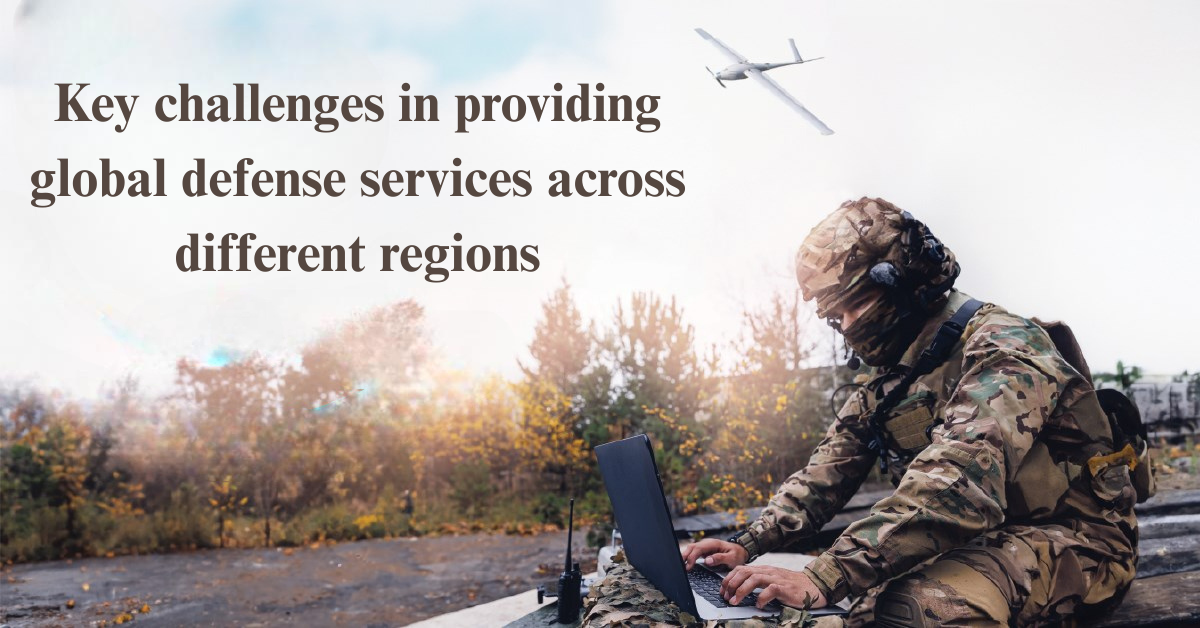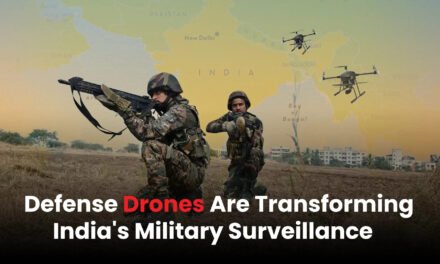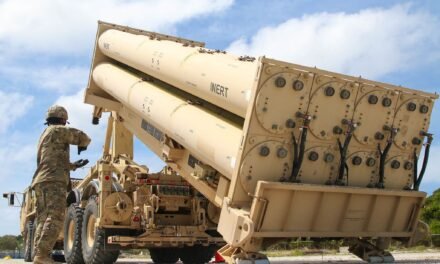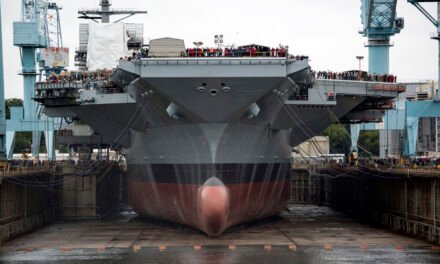Providing global defense services across different regions involves navigating a range of complex challenges due to geopolitical, logistical, technological, and cultural factors. Here are the key challenges:
1. Geopolitical Complexity
- A. Diverse Threat Environments:
- Each region has unique security challenges, such as terrorism in the Middle East, cyber threats in Europe, or territorial disputes in Asia-Pacific.
- Adapting defense services to address these varied threats requires tailored strategies.
- B. Political Instability:
- Operating in unstable or conflict-prone areas can jeopardize the safety of personnel and disrupt operations.
- C. Regulatory Barriers:
- Differing defense export controls, laws, and international treaties can complicate the provision of services across borders.
- Example: International Traffic in Arms Regulations (ITAR) imposes strict controls on U.S. defense exports.
2. Logistical Challenges
- A. Supply Chain Vulnerabilities:
- Long and complex supply chains are susceptible to disruptions from natural disasters, political conflicts, or cyberattacks.
- Example: Delays in delivering critical components for aircraft maintenance due to geopolitical tensions.
- B. Resource Allocation:
- Balancing resource deployment across multiple regions can strain budgets and operational capabilities.
- C. Infrastructure Limitations:
- Remote or underdeveloped regions may lack the necessary infrastructure, such as ports, airfields, or secure storage facilities.
3. Cultural and Language Barriers
- A. Communication Issues:
- Language differences can hinder effective collaboration between local personnel, allied forces, and contractors.
- B. Cultural Sensitivities:
- Misunderstandings of local customs and norms can affect cooperation and create friction.
- Example: Training local forces may require sensitivity to cultural and religious practices.
4. Interoperability Challenges
- A. Differing Standards:
- Allies and partner nations often use incompatible equipment, systems, or protocols, complicating joint operations.
- Example: NATO forces rely on STANAG standards for interoperability, which non-member countries may not follow.
- B. Multi-Domain Integration:
- Coordinating air, land, sea, space, and cyber operations across diverse forces and regions is highly complex.
5. Cybersecurity Threats
- A. Protecting Critical Systems:
- Global defense services rely on interconnected systems, which are vulnerable to cyberattacks.
- Example: Hacking attempts on satellite communication systems used for military coordination.
- B. Regional Variations in Cyber Capabilities:
- Disparities in cybersecurity expertise and infrastructure between regions can create vulnerabilities.
6. Technological Challenges
- A. Rapidly Advancing Technologies:
- Keeping up with emerging technologies, such as AI, hypersonic weapons, and quantum computing, requires constant innovation.
- B. Legacy Systems:
- Integrating modern systems with older, legacy equipment still in use in many regions can be difficult.
7. Environmental and Climate Challenges
- A. Harsh Environments:
- Operating in extreme climates, such as deserts, jungles, or the Arctic, requires specialized equipment and training.
- Example: Maintaining aircraft in sand-heavy regions or operating submarines in icy waters.
- B. Natural Disasters:
- Floods, earthquakes, and other disasters can disrupt operations and create additional demands on defense services.
8. Cost and Budget Constraints
- A. Funding Variability:
- Defense budgets differ widely between countries and regions, limiting the scope of services that can be provided.
- Example: Some nations may prioritize economic development over defense spending.
- B. Exchange Rate Risks:
- Currency fluctuations can affect the cost of international defense contracts.
9. Workforce and Skill Shortages
- A. Skilled Personnel:
- Finding and retaining skilled personnel, such as cybersecurity experts or aircraft technicians, is a global challenge.
- B. Training Local Forces:
- Providing effective training to local forces requires significant time, resources, and cultural understanding.
10. Ethical and Legal Concerns
- A. Human Rights Issues:
- Operating in regions with poor human rights records can raise ethical concerns and attract public scrutiny.
- B. Use of Private Military Contractors:
- Accountability for private military companies (PMCs) operating in conflict zones can be problematic.
- C. Compliance with International Law:
- Ensuring adherence to laws such as the Geneva Conventions while providing defense services.
11. Managing Alliances and Partnerships
- A. Conflicting Interests:
- Partners in a coalition may have differing strategic priorities or political agendas.
- Example: Balancing the interests of NATO allies with those of non-member states.
- B. Trust and Information Sharing:
- Sharing sensitive information with partner nations requires trust and robust security measures.
12. Public and Political Perception
- A. Opposition to Foreign Military Presence:
- Local populations may resist the presence of foreign defense services due to political or historical reasons.
- B. Transparency and Accountability:
- Governments and defense contractors must demonstrate transparency in spending and decision-making to maintain public trust.
13. Future Trends and Challenges
- A. Space Domain Operations:
- Expanding defense services into space requires new technologies, regulations, and global cooperation.
- B. Climate Change:
- Increased resource competition and the impact of climate change on global stability will pose new challenges.
- C. Hybrid Warfare:
- The rise of hybrid threats combining conventional, cyber, and asymmetric tactics will require innovative defense solutions.
Conclusion
Providing global defense services is a complex endeavor that demands careful navigation of geopolitical, logistical, and technological challenges. Success depends on adaptability, collaboration, and innovation to address regional variations, emerging threats, and the evolving demands of modern defense operations. Overcoming these challenges requires a coordinated approach that integrates advanced technologies, robust partnerships, and a deep understanding of local contexts.
Hashtags
#GlobalDefenseServices #InternationalMilitarySupport #DefenseAcrossBorders #GlobalSecurityChallenges #LogisticsAndDeploymentChallenges #DefenseLogisticsIssues #GlobalDeploymentChallenges #SupplyChainForDefense #OperationalReadinessWorldwide #LogisticsAcrossRegions #CulturalAndRegionalDifferences #RegionalDefenseComplexities #CrossCulturalMilitaryOps #RegionalSecurityDynamics #LocalDefenseIntegration #CulturalChallengesInDefense #TechGapsInGlobalDefense #InfrastructureForDefense













